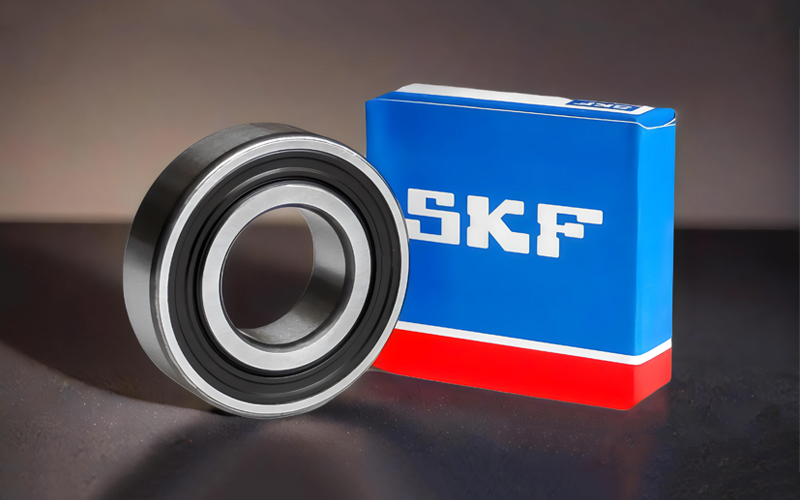Selecting the correct SKF bearing for your application is crucial for ensuring the efficiency and longevity of your machinery. Bearings play a vital role in reducing friction and carrying loads in rotating or oscillating machinery, and SKF, a leading manufacturer, offers a wide range of bearings suitable for various applications. Here are five essential considerations when choosing the right SKF bearing.
- Understand Load Requirements : The first step in choosing the right SKF bearing is understanding the load requirements of your application. Bearings are designed to handle different types of loads: radial, axial, or a combination of both. Radial loads act perpendicular to the shaft, while axial loads act parallel to it. Depending on the application, the bearing may need to support one type of load or both. <.For example, cylindrical roller bearings are excellent for high radial loads but not suitable for axial loads. On the other hand, thrust bearings, such as SKF thrust ball bearings and spherical roller thrust bearings, are designed to support axial loads. Understanding the specific load requirements will help you select a bearing that can handle the expected stresses without premature wear or failure.
- Consider Operating Speed : The speed at which your machinery operates is another critical factor in bearing selection. Different bearings are designed to perform optimally at different speeds. High-speed applications require bearings that can minimize friction and heat generation, which can lead to wear and failure.
For high-speed applications, SKF provides super-precision bearings that are designed to reduce friction and heat buildup, ensuring smooth and efficient operation. Conversely, for applications that operate at lower speeds but require the ability to handle larger forces, such as tapered roller bearings, SKF offers bearings that provide the necessary support and durability. - Evaluate the Application Environment : The environment in which the bearing operates significantly impacts its performance and lifespan. Factors such as temperature, contamination, and the potential for misalignment should be considered when selecting a bearing. For instance, in environments with high temperatures or corrosive conditions, selecting a bearing made from materials resistant to heat and corrosion is vital.SKF bearings are available in various materials and designs to suit different environmental conditions. Spherical roller thrust bearings, for example, can handle misalignment and are suitable for harsher environments, making them ideal for applications where shaft alignment is a challenge, such as in conveyor systems or large-scale industrial machinery.
- Determine Size and Space Constraints : The physical space available for the bearing is another crucial consideration. The bearing must fit within the designated area, considering both the shaft and housing dimensions. This includes not just the diameter and width of the bearing but also any space needed for lubrication and seals. SKF offers a range of bearings in various sizes to accommodate different space constraints. Selecting a bearing that fits well within your machinery’s design is essential to ensure optimal performance and prevent issues such as overheating or excessive wear.
- Maintenance and Longevity : Finally, consider the maintenance requirements and expected lifespan of the bearing. Some bearings are designed for long service life with minimal maintenance, while others might need more frequent attention. Regular maintenance activities, such as lubrication and alignment checks, are essential to extend the life of the bearing and ensure reliable operation.SKF distributors provide bearings designed for durability and ease of maintenance, helping to reduce downtime and extend the lifespan of your machinery. Understanding the maintenance needs of different bearing types can help you select one that aligns with your operational and maintenance capabilities.
Conclusion
Choosing the right SKF bearing involves carefully evaluating various factors, including load requirements, operating speed, environmental conditions, size constraints, and maintenance needs. By considering these factors, you can select a bearing that not only meets your application’s needs but also contributes to the overall efficiency and reliability of your machinery.
For those looking to purchase SKF bearings, Bearing World is a trusted supplier offering a wide range of SKF bearings suitable for various industrial and automotive applications. Their knowledgeable team can help you find the right bearing for your needs and provide valuable support and advice, ensuring you get the most out of your investment.






